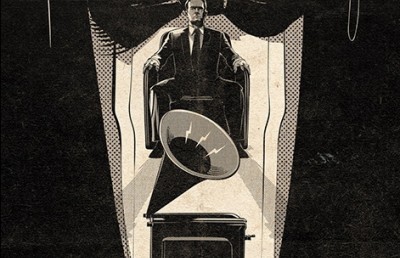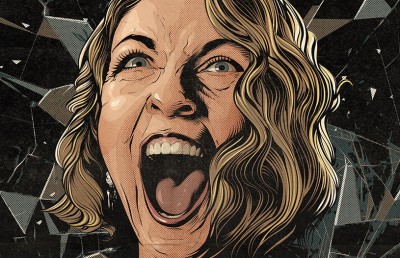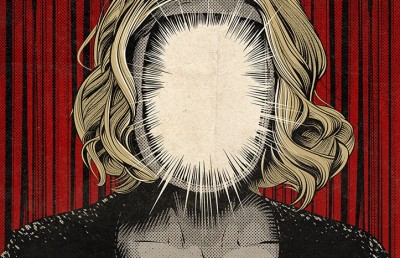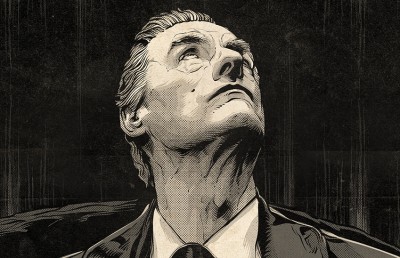Secret Histories Return to Twin Peaks
Mark Frost and the Spatiotemporal Expansion of Season 3
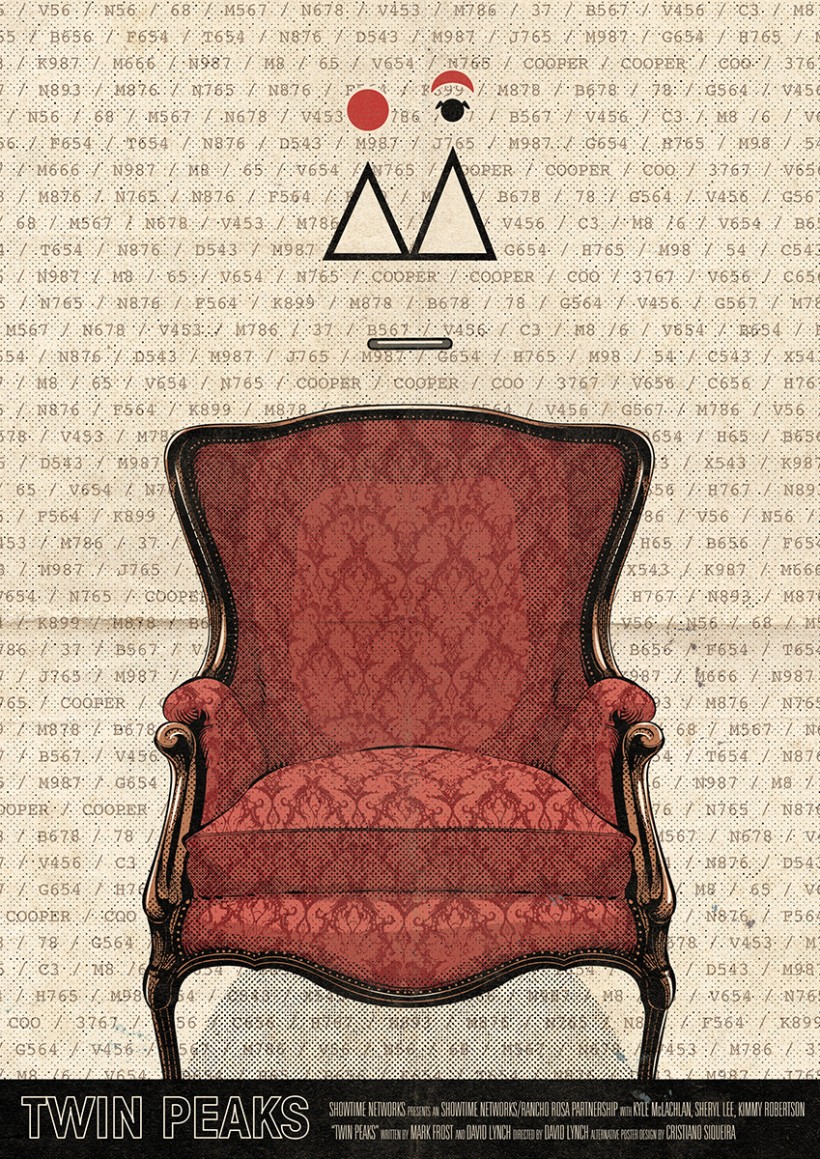
Image courtesy of Cristiano Siqueira
For those tempted to primarily credit (or blame) writer/director David Lynch for the open-ended, multifaceted, difficult to pin down nature of the limited series Twin Peaks: The Return, co-writer Mark Frost’s book The Secret History of Twin Peaks both confirms and contradicts that thesis. Like The Return (as the show’s third season was dubbed in one of Showtime’s few permitted interventions), Frost’s work pursues a long-dormant story in several directions. Both series and book abandon the tight timeline and bounded setting that once marked Twin Peaks, shifting from the parable-like containment of the original to something more consciously saturated in explicit American history. Surprisingly, however, the incidents and direct concerns of The Secret History and The Return barely overlap; the book’s curious focus on UFO lore, along with most of its enticing loose ends, never pays off (and barely even comes up) in the series. In retrospect, the book can look like Frost’s own personal, private path, an opportunity to explore subjects that interested him under the Twin Peaks masthead while Lynch directed the series as a film rather than a week-to-week show that Frost could help run (Lynch has stated baldly that he didn’t read Frost’s book). Yet The Return and its literary companion, complemented in October 2017 by Frost’s much shorter and simpler The Final Dossier, do have some broader commonalities in spirit, reminding us that Frost co-authored The Return, however curtailed his role in its actual production.
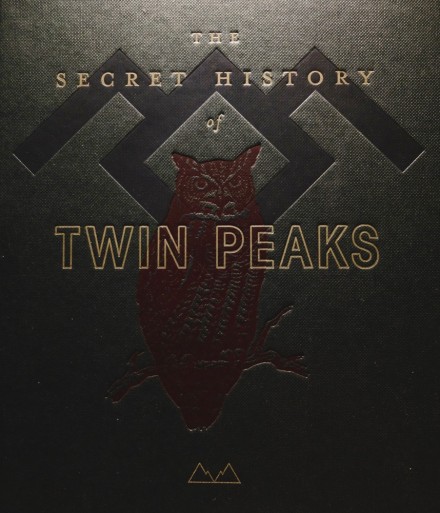
The Secret History of Twin Peaks, a lavishly illustrated and assembled epistolary novel published by Mark Frost in October 2016, covers esoteric lore and small-town drama across nearly two centuries. Ostensibly a collection of letters, memoirs, government reports, and newspaper articles stitched together by an anonymous “archivist” and annotated by a young FBI agent, this strange, sprawling text stands on its own…yet also calls out for companionship as clarification. This is, after all, just one entry in a multimedia universe launched shortly after the Hollywood writer’s strike in 1988, when agent Tony Krantz suggested a new project for two of his clients, acclaimed filmmaker David Lynch and rising screenwriter Mark Frost. The budding duo had already struck out with a biopic of Marilyn Monroe (their script implicated Robert Kennedy in her downfall, dooming the project with a studio where Ethel Kennedy sat on the board) as well as a wacky out-of-body comedy set in a small town (ready to go into production with Martin Short as its lead, until the producer went bankrupt). This time, however, Krantz would encourage Lynch and Frost to look into the field where Frost, not Lynch, had established his career: prime-time network television.
With nighttime soaps like Dallas and Dynasty all the rage, ABC pushed Peyton Place as a model. The 1964-69 soap opera (based on a 1956 novel and a 1957 film, starring Twin Peaks’ own Russ Tamblyn) documented the melodramatic intrigues taking place beneath the placid surface of a New England community. Lynch and Frost would update this concept not merely to entice a more restless eighties audience, but also to incorporate Lynch’s surreal tendencies and unsettling atmosphere. Krantz described this as “Blue Velvet for the small screen”; with Lynch’s sensibility as the selling point and Frost’s background in network TV as security (he’d been story supervisor for several seasons of the hit Hill Street Blues), the desperate last-place network took the bait. Using the murder of popular homecoming queen Laura Palmer (Sheryl Lee) and the arrival of investigating FBI Agent Dale Cooper (Kyle MacLachlan) as the hook, the Twin Peaks pilot found immediate success in the spring of 1990. Despite many reversals of fortune, that intriguing, focused concept has, nearly thirty years later, grown to encompass five novels, a standalone audiobook, two seasons of network television, a feature film, a deleted scenes collection, several short videos, and, most importantly for our purposes, the Showtime renewal.
In many ways, Twin Peaks: The Return fuses the sensibilities of the two big solo Twin Peaks works: The Secret History, a book about global conspiracies and cosmic mysteries written (without Lynch’s involvement) by Mark Frost, who has largely established himself as a novelist rather than film/TV writer in the decades since Twin Peaks; and Twin Peak: Fire Walk With Me, a feature film about a young sexual abuse victim embedded in an uncanny dreamscape directed (without Frost’s involvement) by David Lynch, a filmmaker rather than a showrunner by experience and inclination. The new series borrows the scope and some of the themes of The Secret History while incorporating the bold spiritual interventions and intense violence of Fire Walk With Me (along with, occasionally, several motifs and some actual footage from the film). Lynch has specifically cited Fire Walk With Me as important to understanding the third season, while there are almost no direct textual connections between The Secret History and The Return. In some ways, however, The Secret History predicts the shape and sensibility of The Return as Fire Walk With Me does not.
The entirely Lynch-directed series echoes the tastefully assembled, slightly removed eclecticism of The Secret History more often – in form and feel if not narrative content – than it does the raw, abrasive nature of Fire Walk With Me. The Secret History and The Return are linked, to one another and against earlier incarnations of Twin Peaks, by several factors – geographical sprawl, historical context, achronological storytelling, and the thematic importance of aging. Notably, all of the aforementioned elements, except for geography, are themselves linked by one common thread: an awareness of time. Frost has been quite explicit about this importance, calling The Return “an exercise in engaging with one of the most powerful themes in all of art, which is the ruthless passage of time. … We’re all trapped in time and we’re all going to die.” 1
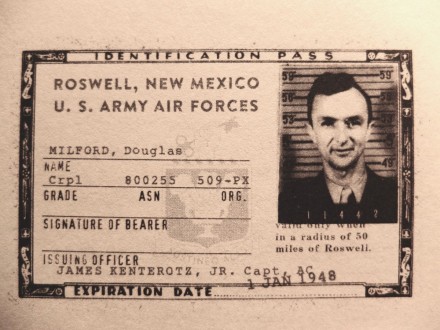
If the national scope of The Return and The Secret History doesn’t deal directly with the passage of time, it nonetheless speaks to that influence, reflecting the lifelong travels and studies of Frost. Parts of the book – the exciting explorations of Lewis and Clark, the rootless drifting of young Doug Milford, the spiritual quests of Dr. Lawrence Jacoby – reflect a youthful longing for adventure or escape. However, especially as the text draws to a close, many of the physical journeys are characterized by professional necessity and wise familiarity rather than restless wandering. (Interestingly, The Final Dossier’s spirit is closer to that wanderlust as it chronicles the diaspora of the town’s Gen X residents and rewinds to rehash the bohemian ramblings of its boomer citizens.) Indeed, The Secret History tends to trade consistency between character and location; within Twin Peaks, it jumps from character to character, but while traveling further afield, Col. Milford is the focus. His official duties keep him moving from the New Mexico desert to the Pasadena suburbs to a secret military base in Florida.
The Return is even more clear in this matter, departing from previous Lynch-directed road trips. The director abandons the wide-eyed speed of Wild at Heart (1990) and the quiet absorption of The Straight Story (1999) for “Mr. C”’s (Kyle MacLachlan’s) joyless quest for coordinates. Any pretense of relishing the journey for its own purpose is abandoned in a cold obsession with destination. Likewise, the FBI’s sojourn to South Dakota is avowedly non-tourist (“We’re nowhere near Mt. Rushmore!” a disappointed Gordon Cole, played by Lynch himself, shouts upon arrival) and they spend most of their time drinking wine in a hotel room, absorbed in their own concerns; their engagement with the surrounding area is entirely functional. Las Vegas does admittedly take on a magical quality through the childlike eyes of “Dougie” Cooper (also played by MacLachlan), but he is very much the exception (at least until his spirit slowly begins to infect those around him) – for most of the other characters, Vegas seems to be a dreary, stressful workplace rather than a thrilling playground. Even Jerry Horne (David Patrick Kelly) is too panicked and overwhelmed to enjoy his long hike in the woods. The broadened scope of The Return threatens rather than liberates. Besides “Dougie,” the only ones who cut against this grain may be the assassin team of Chantal (Jennifer Jason Leigh) and Hutch (Tim Roth), musing about Utah’s Mormon culture as they pass nondescript road signs and savor a bleak back alley view while munching on fast food in Vegas.
The dislocated anxiety of the new material stands in marked contrast to the spirit of the original Twin Peaks, which stuck resolutely to one town while overflowing with wonder and delight at this singular location. Every day in Twin Peaks felt like Cooper’s first, as he marveled with excitement at its bustling, almost cartoonishly colorful environment. The production design – overseen by Frost, who recruited an old friend for the job – contributed to that sensation, crafting Disneyland-like spaces with bold iconography and sleight-of-hand. In contrast, much of the new series’ Twin Peaks town footage was shot on location (like the pilot and the film), situating the town within the constraints and possibilities of a real place rather than conjuring up a fantasy with smoke and mirrors, even as it also travels far beyond the community’s boundaries. Both The Return and The Secret History use geographical diversity to explore a variety of environments and situations, but instead of assembling a web of comfortably interrelated locations, they allow this sprawl to dilute any sense of confident control or familiar engagement. This expansion breeds alienation, exhaustion, and intimidation, refuting the classical American narrative of civilizing conquest.
The world of The Return – from the atomic aftermath in New Mexico to the globalized drug trade infecting Twin Peaks to the post-2008 housing wasteland of Rancho Rosa – is more situated in American history than almost any other work by Lynch (indeed, the New Mexico sequence is his most explicit period work since The Elephant Man thirty-seven years earlier, putting aside ambiguous sequences in Inland Empire or his Dior ad Lady Blue Shanghai). While some aspects of the Lynch-Frost collaboration require guesswork, we can be fairly confident that Frost is responsible for most of The Return’s historical specificity. Lynch prefers to live in the moment of an ambiguous dreamland, dipping into various eras without being bound by any of them, whereas Frost’s works – the late Victorian adventure novel The List of 7, the New Orleans political thriller Storyville (his first and last directed feature film) – are obsessed with the nuts-and-bolts of backstory – family trees, political epochs, intersections of grand societal projects and everyday lives. (In terms of both chronological and historical breadth, the short-lived Fox series American Chronicles (1990), a Lynch/Frost collaboration for which Frost was more keen, foreshadows both The Secret History and The Return.)
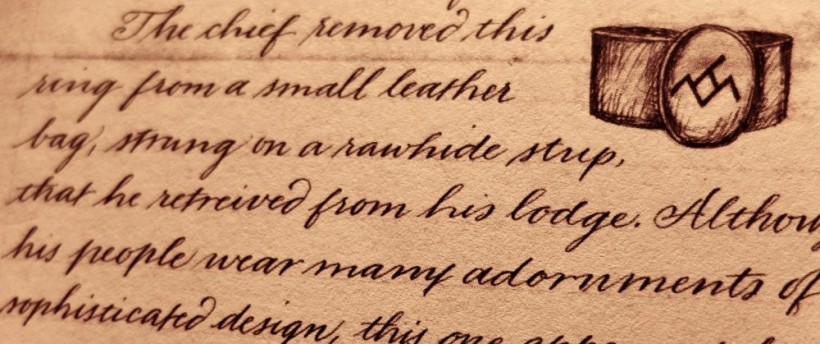
If historical context is a surprisingly pronounced but still minor texture in The Return, it’s the entire substance of The Secret History, from the title to the format to the details of its story. Frost is fond of incorporating world-historical figures into the Twin Peaks mythology, demonstrated most amusingly by his use of the Owl Cave ring, an object invented by Lynch for Fire Walk With Me. In that film, the ring is worn by a sex worker in a backwater trailer park and her friend, a popular high schooler in a small town. In The Secret History, the ring’s bearers include legendary explorer Meriwether Lewis, notorious rocket scientist/occultist Jack Parsons, and President Richard Nixon (The Final Dossier even goes so far as to place it on the finger of Donald Trump). In another example of differing sensibilities, according to original series writer Harley Peyton, Lynch excised a line about Marcus Welby from a 1990 script because “they’re not going to watch television like we would and they would never say that” 2 . In Frost’s book, Jackie Gleason pops up to proclaim his interest in UFOs and experience a traumatizing interdimensional encounter alongside Nixon and an obscure character from a season two subplot. Granted, Lynch finds a way to include his own celebrity encounter in The Return, but it’s telling that Monica Bellucci pops up in a bizarre dream rather than a “real world” run-in.
Frost’s engagement with history isn’t merely that of the buff who wants to insert compelling anecdotes and cross-references; his work obviously has a political orientation, pronounced overtly in The Secret History and more obliquely (with sporadic open outbursts) in The Return. The Secret History often hints at a kind of benevolent institutionalism, liberalism in the mid-century sense concerned with the threat of small-minded or power-hungry authority figures but also keeping faith – or hope – that civic-minded public servants can counter their influence. Conflicts occur less between systems or classes than within systems and classes, with different factions of the elite aligned with either light or dark forces in an eternal struggle (specifically posited early in the book as Freemasons against the Illuminati). Individual characters like Doug Milford and President Nixon often find themselves holding ambiguous positions within this shadowy conflict, as does, it’s implied, all of mankind.
The Return presents a bleaker outlook, amplified later by The Final Dossier where we learn, for example, that Ghostwood National Forest was developed into a brutal private prison. The veterans of the sheriff’s station and the FBI (plus newbie Tammy, Frost’s next-generation surrogate in the books) remain steadfast but corruption, treachery, and confusion encroach from every direction. Gun violence, wartime injury/trauma, drug addiction, and middle-class economic troubles are all referenced in the series, while anything not covered in that litany is called out directly by the scathing Dr. Amp (Dr. Jacoby’s latest incarnation), the populist left’s answer to Alex Jones. Amp, almost certainly Frost’s invention, is presented warmly in The Final Dossier as an admirable Quixote, but despite that book’s final incantation – “Never give up.” – Frost’s weary stoicism suggests this resistance is more a matter of not going down without a fight than actually being able to turn the tables. While the oft-noted darkness of The Return was frequently credited to Lynch, its social aspects are consistent with the outlook of Frost’s independent work.
Curiously coupled with the grim march of history across The Secret History’s pages and The Return’s scenes, a mildly achronological approach to storytelling offers some freedom (building the groundwork for the final episodes’ use of time travel). Both The Secret History and The Return unfold mostly in a proper order. The Secret History begins with Lewis and Clark expedition in the early 1800s and ends with Major Briggs concluding his dossier just hours after the events of the season two finale (set in 1989). The Return is a bit trickier, opening with a sequence that might take place anytime and literally closing with the question “What year is this?” Yet most events within each storyline unfold in a relatively easy-to-follow manner. Nonetheless, both works toy with their timelines in subtle, overt, and at times probably even accidental fashion.
Once it reaches the post-World War II era, The Secret History organizes itself more by area and character than year; we travel up to the time of the series within Twin Peaks before leaping back to the forties to follow Doug Milford’s various investigations elsewhere. Meanwhile, the Major’s and Tammy’s interjections further complicate the timeline, creating several layers of history through which the reader filters various events. The Return contains two huge detours, the first around its halfway point, leaping back forty years (an unprecedented gesture on the series, in which even rewinding to Laura’s last seven days seemed radical) to present the Trinity nuclear test in the White Sands Desert, followed eventually by a 1956 B-horror film scenario. The other major time shift occurs when Cooper himself travels back to 1989 to (apparently) undo Laura’s murder, introducing various paradoxes which Frost attempts to address (with limited success) in The Final Dossier. By the time the eighteenth episode unfolds, we – like Cooper – don’t even know when we are, though at least in this case a character has accompanied us through the time warp.
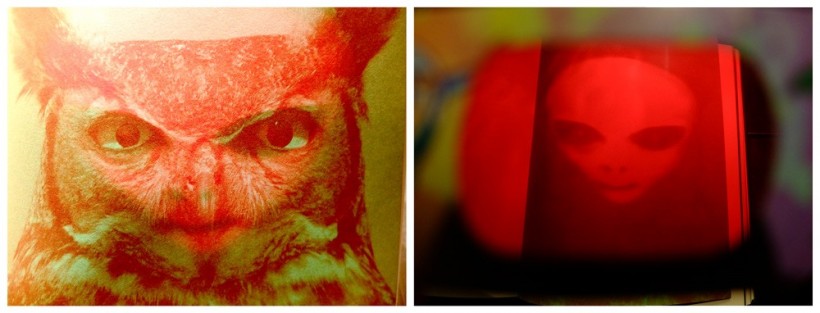
More arresting, and disconcerting, are the weird discrepancies in both The Secret History and The Return. In the book, contradictions emerge not just between its narrative and the existing canon of the show but internally as well: stamps appear on postcards months before the events they refer to; characters are born in different years from page to page, sometimes even paragraph to paragraph; and some events – including characters’ deaths – seem to unfold twice. While there was much theorizing about the meaning of these timeline discrepancies after The Secret History was published, it now seems likely, given the scope of this project, that many were simple oversights on Frost’s part (there’s no further reference in the series, and even on the page they don’t really offer anything concretely valuable). Intentional or otherwise, these slips do foreshadow an aspect of The Return that may have had nothing to do with Frost, an odd synchronicity of accident and compromise.
After about nine or ten episodes of The Return, astute viewers began to notice that a few events were unfolding in an impossible order. A father and son played ball, even though the father was ostensibly still at a party. A deputy reported an incident “earlier today” that had unfolded many day/nights earlier according to the way the series had been edited. There were glitches, odd continuity errors, chains of cause and effect that seemed impossible to reconcile. As with The Secret History, fans theorized that inconsistencies pointed toward an interdimensional grand scheme, while other suggested more down-to-earth explanations for the logistical problems. Ultimately, the question of intent is beside the point – both The Secret History and The Return challenge and obstruct the viewer’s ability to put their puzzle pieces together and as such they complement one another. The primary concern, in both cases, is expressing the truth of the moment rather than crafting an airtight structure. Lynch’s aversion to closure and neat answers is well-known, but Frost has also played this card in interviews, pointing out that documents are always contradictory and difficult to reconcile, further professing that canon doesn’t mean much to him. Twin Peaks, for all its other difficulties, was aggressively linear in its older form (Fire Walk With Me tentatively tiptoes toward suggestions of time travel and interdimensional doubling, but mostly sequestered in dreams or visions). The Secret History and The Return demolish this framework, through both grand gestures and a relentless chiseling around the edges.
Aside, but not entirely divorced, from these formal and narrative gestures, both The Secret History and The Return foreground the process of aging. This goes hand in hand with a breadth of time to complement the breadth of place. In The Secret History, the aging process is depicted by encompassing characters’ entire lives within the text; we follow both Doug Milford and Robert Jacoby from youth to death. Other characters, like the ring-bearing trio of Lewis, Parsons, and Nixon, fall into a slow decline that demonstrates spiritual death (alongside, sometimes, physical demise). Elsewhere the slow march of years – from football hero to criminal, loving newlyweds to bitter old couple, lovestruck teen to heartbroken adult – has a more open-ended effect (in some cases, concluded in The Return or The Final Dossier). In The Secret History, Frost is free to do something nearly impossible onscreen, aging his characters to study the ravages of time.
In The Return, a similar effect is more inferential – and more poignant, based on viewers’ knowledge of the earlier seasons. Taken as a work in itself, the third season unfolds mostly over a matter of days, but we bring to it a sense of the gap between this work and the previous installments; in some cases, people who watched the series in 1990 carry not just the awareness of these intervening years but the actual experience of their passage. The phenomenon described to the reader in The Secret History is lived by the viewer of The Return. On top of this effect, the show makes frequent gestures to its own past, not simply through dialogue or static images (“brings back some memories,” chokes Bobby, played by Dana Ashbrook, when confronted with Laura’s portrait) but by offering uncanny glimpses of Fire Walk With Me – Gordon, Albert Rosenfield (Miguel Ferrer), Cooper, Leland Palmer (Ray Wise), James Hurley (James Marshall), and Laura – as well as the Twin Peaks pilot and finale, sometimes directly juxtaposing these clips with new footage of the same characters, twenty-five years older. Actors who have died since the original series are featured onscreen, just as Frost was able to revive their characters on the page; surprisingly, then, there is more continuity than one might expect between the two works.
Within the texts themselves, aging and mortality are emphasized as part of the story. In The Secret History, Doug and Robert ruminate on the approach of death, while the Log Lady offers a moving eulogy for Robert (as Hawk will for her, after her own passing in The Final Dossier). In The Return, the Log Lady (Catherine Coulson) and Carl Rodd (Harry Dean Stanton) speak as elderly folks facing their own final days (both actors have themselves passed away since shooting those scenes, in Coulson’s case only days later). Aging also finds more oblique expression in the delightfully multifaceted tale of “Dougie” Cooper. His confusion at times suggests a newborn infant, dazzled by the world but incapable of communicating with it; at others, he evokes a senior citizen worn down by dementia, reaching out to grasp memories and emotional triggers he can no longer quite place.
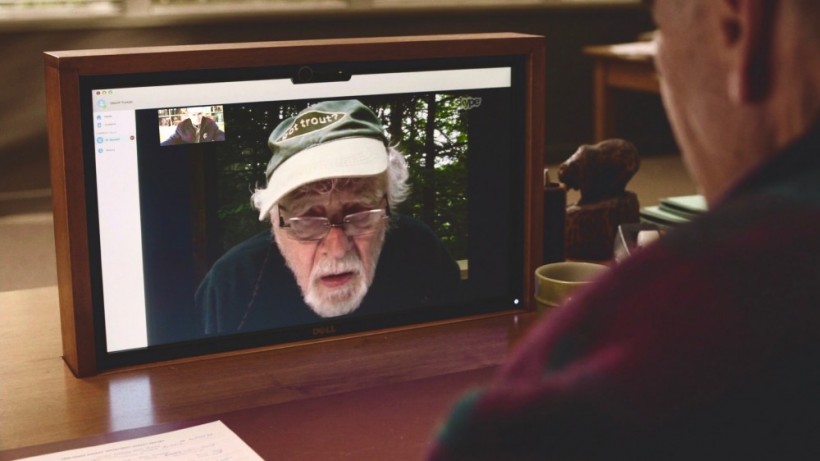
Frost’s own father Warren – who played Doc Hayward in the original series and returns for a Skype cameo in The Return – died of Alzheimers not long after the show wrapped; a sense of loss, of the inevitability of physical and emotional decline, and an appreciation of life, suffuses all of Mark Frost’s work on and around the show, as well as his public statements. “We’re all traveling along this conveyer belt that is relentlessly moving us toward this very certain outcome,” Frost asserts, and both The Secret History and The Return are concerned with mortality (which is not to say the experience of death itself) in a way the original material never could be – these more recent works are not about a promising life tragically cut short, but about the inevitability of everyone’s eventual disappointment and demise. Many commentators have explored the notion that The Return’s unusual, loose structure owes something to the passage of time since the original Twin Peaks (as the Diane… podcast has noted, an awareness of this passage is baked into the new series in a way it couldn’t possibly have been for the original two seasons). Many also point to the age of the two creators (Lynch is seventy-one, Frost sixty-four).
Jonathan Foltz, the author of “David Lynch’s Late Style,” in the Los Angeles Review of Books [[“David Lynch’s Late Style”: https://lareviewofbooks.org/article/david-lynchs-late-style/, dives deeply into a subject broached earlier on Diane…: that The Return fits a literary concept developed by Theodor Adorno, which observes that as they age and confront their own mortality, creators (he uses Beethoven as a specific example) may develop a “late style,” less rigorous and disciplined but more open to fleeting, fragmented inspiration. “Touched by death,” Adorno writes, “the hand of the master sets free the masses of material that he used to form; its tears and fissures, witness to the finite powerlessness of the I confronted with Being, are its final work.” Foltz focuses entirely on Lynch in his own study, and understandably so – not only is Lynch the more well-known artist, he also has more control over the final shape of The Return as a director (and one with final cut, whereas Frost’s formal involvement ended in pre-production). Lynch even cast himself as one of the lead actors, at one point jumping directly from a close-up of his present self to a shot from Fire Walk With Me, in which he is twenty-five years younger!
However, it’s clear from Frost’s own statements – and more importantly, the shape of The Secret History (since Adorno and Foltz apply “late style” less to conscious content than instinctive form) – that much of The Return’s loose, open, eclectic feel belongs to Frost too. And if Lynch’s direction in The Return varies dramatically from the rest of his post-Twin Peaks work, perhaps this is a function of not only his personal maturation but also a renewed partnership with Frost. Their collaboration, left to percolate for two decades, was pursued this time far more comprehensively than the handful of teleplays written by the duo in 1988 and 1989 (three episodes total, out of thirty), which had been followed by a two-year tug of war over the direction and nature of the material. By contrast, writing an eighteen-hour opus with no outside involvement allowed the two distinctive voices to intertwine more subtly than they had in the past. Finally, The Secret History of Twin Peaks may be Frost’s dogged claim on his own work, a literary Frostian flag planted on a Lynchian cinematic hill, evidence that to more fully experience Twin Peaks’ mysteries, we must consider the imaginations and the sensibilities of both its creators.
Notes
- “Twin Peaks Reboot Not An Exercise in Nostalgia”: http://www.smh.com.au/entertainment/tv-and-radio/twin-peaks-cocreator-mark-frost-reboot-not-an-exercise-in-nostalgia-20161128-gsz5nv.html ↩
- Twin Peaks: Behind the Scenes (1990), by Mark Altman ↩


